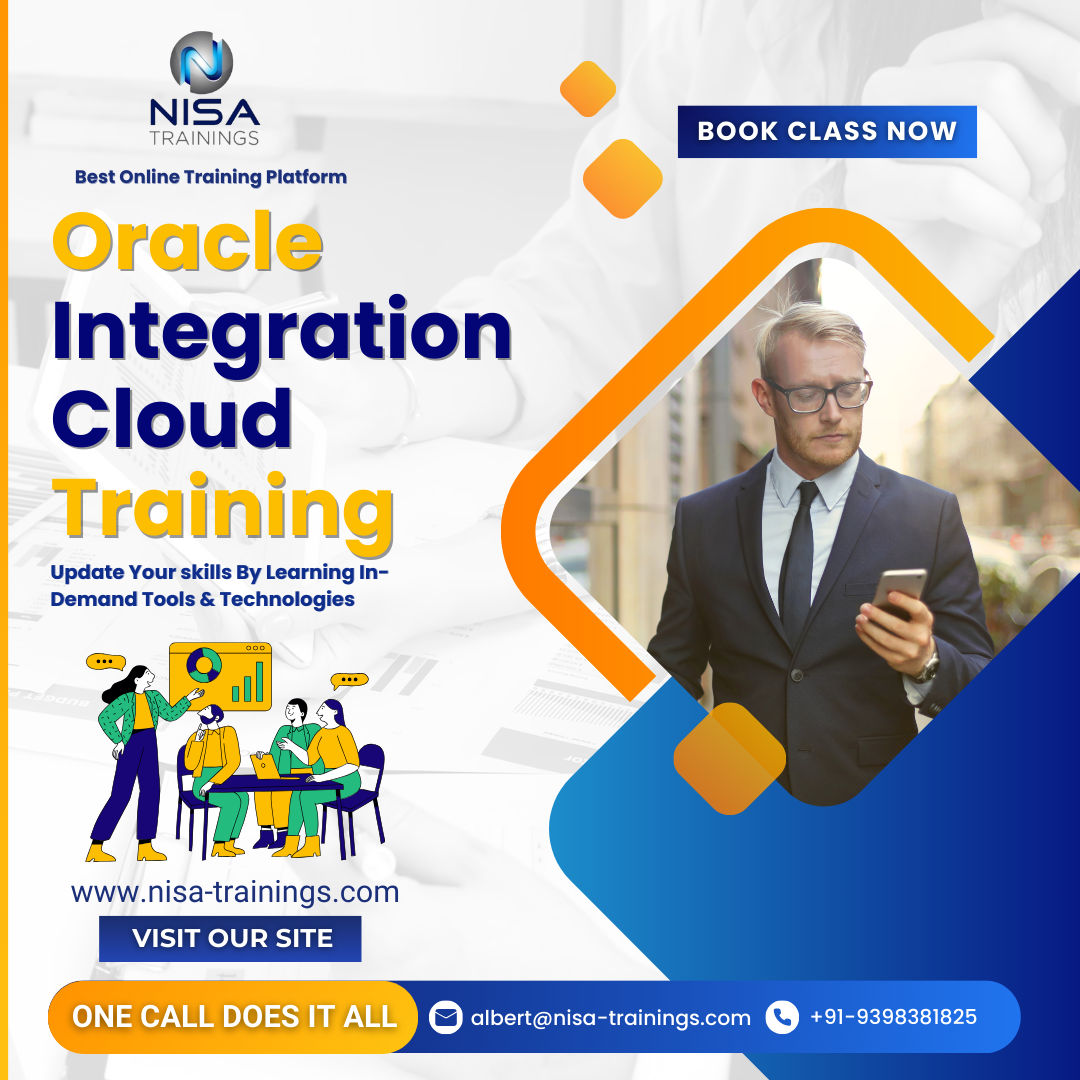Oracle Integration Cloud Training

Why should you choose Nisa For Oracle Integration Cloud Training?
Nisa Trainings is the best online training platform for conducting one-on-one interactive live sessions with a 1:1 student-teacher ratio. You can gain hands-on experience by working on near-real-time projects under the guidance of our experienced faculty. We support you even after the completion of the course and happy to clarify your doubts anytime. Our teaching style at Nisa Trainings is entirely hands-on. You’ll have access to our desktop screen and will be actively conducting hands-on labs on your desktop.
Job Assistance
If you face any problem while working on Oracle Integration Cloud Course, then Nisa Trainings is simply a Call/Text/Email away to assist you. We offer Online Job Support for professionals to assist them and to solve their problems in real-time.
The Process we follow for our Online Job Support Service:
- We receive your inquiry for Online Job
- We will arrange a telephone call with our consultant to grasp your complete requirement and the tools you’re
- If our consultant is 100% confident in taking up your requirement and when you are also comfortable with our consultant, we will only agree to provide service. And then you have to make the payment to get the service from
- We will fix the timing for Online Job Support as mutually agreed by you and our consultant.
Course Information
Oracle Integration Cloud Training
Duration: 25 Hours
Timings: Weekdays (1-2 Hours per day) [OR] Weekends (2-3 Hours per day)
Training Method: Instructor Led Online One-on-One Live Interactive
Sessions.
COURSE CONTENT :
Module 1: Introduction to Oracle Integration Cloud
Overview of Oracle Integration Cloud (OIC)
- Introduction to Cloud Integration
- Benefits of Oracle Integration Cloud
- Key Features and Components
- Integration, Process, and Visual Builder
- Understanding OIC Architecture
- Types of Integrations (App-to-App, App-to-Process, Process-to-Process)
Exploring Oracle Cloud Infrastructure (OCI)
- Integration with OCI Services
- Overview of Oracle Cloud Applications
Oracle Integration Cloud Services Overview
- Cloud Integration Services
- Process Automation (BPM)
- Oracle Integration Monitoring and Analytics
Module 2: Configuring Oracle Integration Cloud
Setting Up Oracle Integration Cloud
- Prerequisites and system requirements
- User and role management in OIC
- Accessing Oracle Integration Cloud Console
Creating and Managing Integrations
- Introduction to Integration Patterns
- Configuring Connections to Cloud Applications (Salesforce, Oracle ERP, etc.)
- Creating Integration Projects in OIC
- Integration Flows: Request-Reply, Publish-Subscribe, and Solicit-Response
OIC Service Connectors
- Built-in Connectors (Oracle Cloud Applications, SAP, etc.)
- Configuring and Managing Connectors
- Working with SOAP, REST APIs, and File-based Integrations
Module 3: Data Mapping and Transformation
Data Transformation in OIC
- Introduction to Data Mapping and Transformation
- Using the Visual Mapper for Data Transformation
- Mapping Between Different Data Formats (XML, JSON, etc.)
- Using Functions in Data Mapping
Advanced Data Mapping Techniques
- Complex Data Structures and Object Mapping
- Conditional Logic and Transformation Rules
- Handling Dynamic Data Structures
Testing and Debugging Integrations
- Unit Testing Integrations in OIC
- Debugging Integration Errors
- Using the OIC Logging and Error Handling Tools
Module 4: Orchestration and Business Process Automation
Introduction to Process Automation (BPM)
- Overview of Oracle Process Cloud Service
- Creating and Managing Business Processes
- Designing and Modeling Business Workflows
Orchestrating Complex Processes
- Workflow Elements and Design Patterns
- Decision Models and Business Rules
- Creating Human Tasks, Approvals, and Notifications
Advanced BPM and Process Automation
- Exception Handling in Processes
- Service-Level Agreements (SLA)
- Integrating Process Automation with External Systems
Module 5: Monitoring, Managing, and Securing Integrations
Monitoring Integrations in OIC
- Using OIC Monitoring Dashboard
- Analyzing Integration Metrics and Logs
- Setting Up Alerts and Notifications
Managing Integration Health
- Handling Failed Integrations
- Using Error Recovery and Retry Mechanisms
- Performance Tuning for Integrations
Security in Oracle Integration Cloud
- Authentication and Authorization (OAuth 2.0, WS Security)
- Role-Based Access Control (RBAC)
- Managing Secure Connections to Cloud and On-Premise Applications
- Data Privacy and Encryption
Module 6: Custom Integrations and Advanced Features
Custom Connectors Development
- Introduction to Custom Connectors in OIC
- Creating and Configuring Custom Adapters
- Extending OIC with Custom REST/SOAP APIs
Integrating with IoT and AI
- IoT and Data Stream Integration
- Using AI and Machine Learning Models in OIC
- Real-time Data Processing
Advanced Integration Patterns
- Advanced Orchestration Techniques
- Event-Driven Architecture and Microservices Integration
- Handling Large Volume Data and Streaming Integrations
Module 7: Best Practices and Troubleshooting
Best Practices for Designing Integrations
- Designing Scalable and Maintainable Integrations
- Optimizing Performance of Integrations
- Best Practices for Error Handling and Recovery
Troubleshooting Common Integration Issues
- Identifying and Resolving Connectivity Issues
- Analyzing Integration Logs and Performance Metrics
- Debugging Complex Integration Flows
Module 8: Real-World Use Cases and Case Studies
Case Studies on Oracle Integration Cloud
- Integration of On-Premise and Cloud Applications
- Automating Business Processes Using OIC
- Multi-System Integrations and Data Synchronization
Practical Examples and Exercises
- Building End-to-End Integrations for ERP, CRM, and Legacy Systems
- Automating Approval Workflows in OIC
- Integrating with Third-Party Cloud Applications

